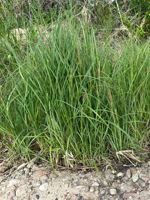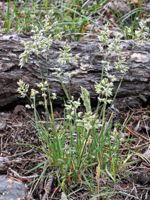Mon-Fri 9am - 5pm Mountain time
Wheat Sedge vs Alpine Bluegrass
Carex atherodes
Poa alpina
CUSTOM GROW
CUSTOM GROW
Wheat Sedge is a native perennial sedge commonly found in wetlands, ditches, and along shorelines. It thrives in saturated soils, spreading by rhizomes to form large colonies that stabilize both soils and shorelines. This makes it valuable for wetland and riparian plantings.
Its distinctive, wheat-like seed spikes add seasonal character while providing food for waterfowl, and its dense clumps supply cover and nesting habitat for birds and small animals. Together, these traits make Wheat Sedge an important species for enhancing biodiversity and supporting healthy wetland ecosystems.
Alpine Bluegrass is a native perennial bunchgrass adapted to cold, high-altitude, and northern environments. It establishes well in harsh mountain and tundra conditions, thriving even in nutrient-poor soils. Its dense tufts provide reliable ground cover in alpine and subalpine habitats.
Hardy and low-maintenance, Alpine Bluegrass is valued in revegetation and erosion control projects due to its strong root system. It provides forage for wildlife and livestock, while its dense growth also offers cover for small animals. Well-suited for reclamation and soil stabilization in high-elevation and northern regions, Alpine Bluegrass is a key species for strengthening fragile landscapes, though it is also found in lower-elevation sites.

